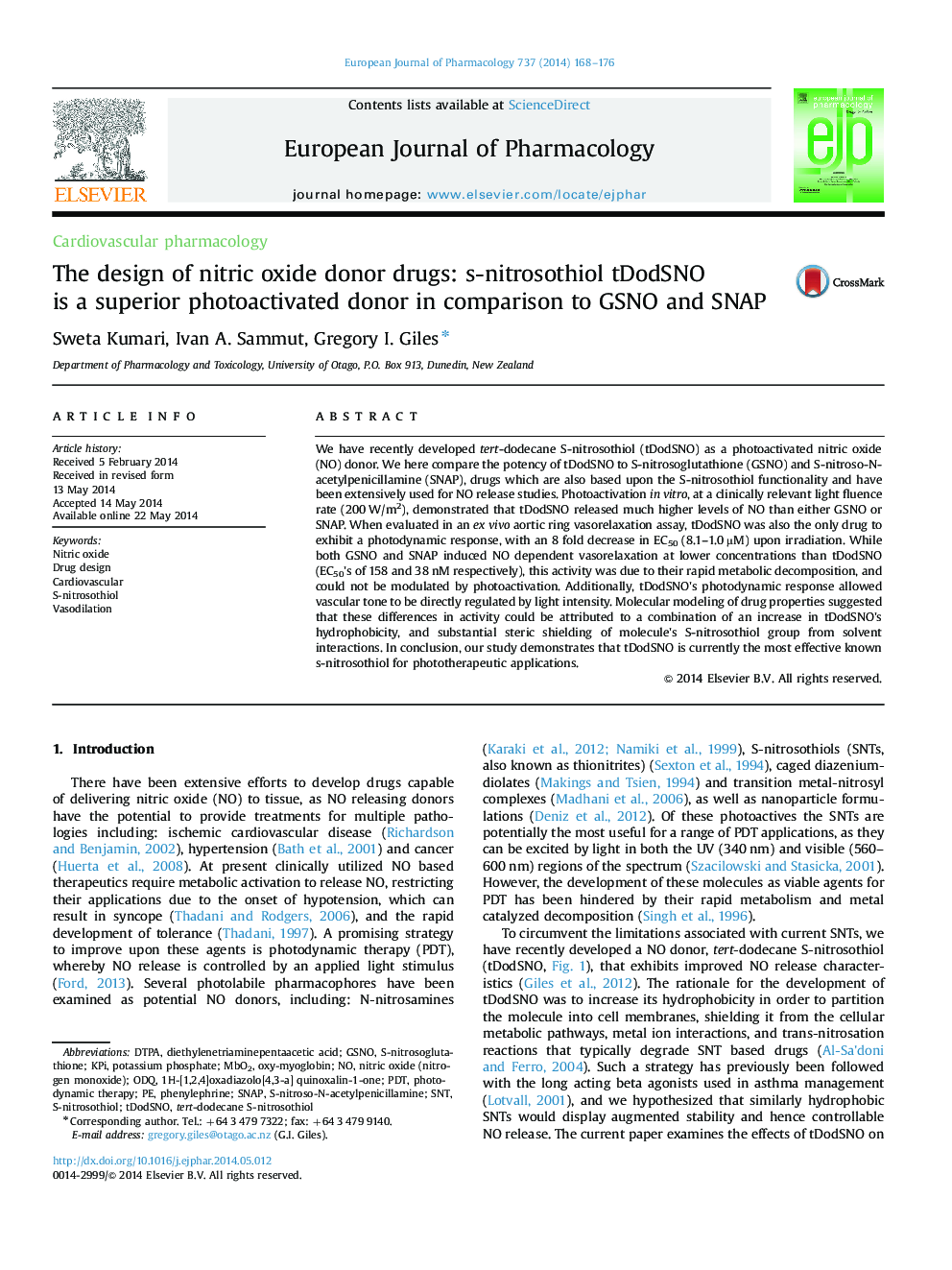| Article ID | Journal | Published Year | Pages | File Type |
|---|---|---|---|---|
| 2531740 | European Journal of Pharmacology | 2014 | 9 Pages |
We have recently developed tert-dodecane S-nitrosothiol (tDodSNO) as a photoactivated nitric oxide (NO) donor. We here compare the potency of tDodSNO to S-nitrosoglutathione (GSNO) and S-nitroso-N-acetylpenicillamine (SNAP), drugs which are also based upon the S-nitrosothiol functionality and have been extensively used for NO release studies. Photoactivation in vitro, at a clinically relevant light fluence rate (200 W/m2), demonstrated that tDodSNO released much higher levels of NO than either GSNO or SNAP. When evaluated in an ex vivo aortic ring vasorelaxation assay, tDodSNO was also the only drug to exhibit a photodynamic response, with an 8 fold decrease in EC50 (8.1–1.0 µM) upon irradiation. While both GSNO and SNAP induced NO dependent vasorelaxation at lower concentrations than tDodSNO (EC50׳s of 158 and 38 nM respectively), this activity was due to their rapid metabolic decomposition, and could not be modulated by photoactivation. Additionally, tDodSNO׳s photodynamic response allowed vascular tone to be directly regulated by light intensity. Molecular modeling of drug properties suggested that these differences in activity could be attributed to a combination of an increase in tDodSNO׳s hydrophobicity, and substantial steric shielding of molecule׳s S-nitrosothiol group from solvent interactions. In conclusion, our study demonstrates that tDodSNO is currently the most effective known s-nitrosothiol for phototherapeutic applications.
